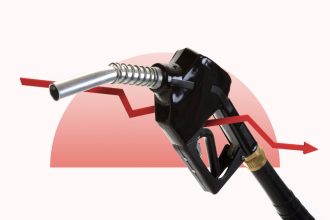Key takeaways
- Trading in your car can make selling your vehicle and buying a new one go much quicker.
- The trade-in value of your car is negotiable. Know what your vehicle is worth, but understand that trade-ins are likely to net less money than a private sale.
- Shop around to find a dealer that offers a good value on your trade-in and a fair price on your new vehicle.
When buying a new car, it can be helpful to have a vehicle you already own that you can trade in. A trade-in gives you a head start on your down payment — and you don’t have to trade in your old car at the same dealership you plan to buy from.
Trading in your car also eliminates much of the work of selling a vehicle, allowing you to cruise home in your new ride much quicker than you would if you had to sell your car yourself. Just be prepared to research how much your car is worth and negotiate once you visit the dealership.
How to trade in your car
Doing your research can help you better understand how to trade in your car so you can maximize the amount your trade-in earns.
1. Find out how much your car is worth
Before you can trade in your vehicle, research your car’s value. Having this number in-hand will help you feel empowered when it comes time to negotiate and can also increase your chances of getting a fair price.
Rather than waiting to find out what the dealer thinks, do some research to get a sense of your current car’s value. Free online appraisal tools, such as Kelley Blue Book or Edmunds, can help you determine the worth of your car. If available, use estimator tools that can offer a deeper sense of the dollars your car will command based on car features beyond make, model, year and mileage.
Value may also be impacted by external factors. If gas prices are high, as they are now, a car that gets better gas mileage might be more in demand than an oversize truck.
2. Take a look at your finances
Trading in a car involves more than assessing the vehicle. You’ll also need to evaluate the state of your finances to know what you can afford on the other side of the trade. You may also want to compare top lenders to get a firm idea of the loans you qualify for — and how your trade-in could potentially increase your buying power.
If you are trading in a car with a loan, determine whether its trade-in value will be enough to pay off the rest of the loan. You can do this by contacting your lender to find out the loan’s payoff amount and comparing that figure to your car’s trade-in value.
Visit multiple dealers to request trade-in quotes and get a firm idea of how much dealers will be willing to offer. Remember, if a dealer offers to pay your loan off for you, you will likely add the payoff amount to a new loan for your next vehicle.
3. Ask for offers from multiple dealers
You don’t have to go to the dealer to start the trade-in process. Instead, you can make dealers come to you with a price. Many online value estimators, such as Kelley Blue Book and TrueCar, are linked to dealers that will extend offers based on the information you share about your car. You can then use these online quotes to negotiate with dealerships to get the best deal possible.
When you’re ready to negotiate, remember that you don’t have to sell your trade-in and buy your new car at the same dealership. Negotiate the trade-in price separately from the purchase price of your next car. You could trade your car in at one dealership and then purchase a car from another to maximize your savings.
Remember, you don’t have to accept the initial trade-in amount a dealer suggests. Dealers typically begin by offering the lowest price possible, so you can negotiate your car’s trade-in value. Tell the dealer the price seems too low based on offers from other dealers or the value you’ve found in your research.
4. Prepare your car for trade in
A nicely maintained vehicle will receive a much better price. Take the extra time to clean the interior and exterior of your car to help increase its trade-in value.
“Make sure your car is clean, and you’re presenting it as you would want to receive it if you were buying it,” says Alain Nana-Sinkam, Chief Industry Analyst at TrueCar. “Also, if there were small flaws you had planned to fix prior to the trade, make sure to get them done so the car is delivered to the dealer as you had reported and as they are expecting it.”
Be sure to have any service records on hand as well as the vehicle registration, car title and all keys. If you don’t have the title because you’re trading in a car with a loan, have the lender’s details ready to hand over.
5. Make an appointment with a dealer
Car dealerships can be busy places, so make an appointment in advance to save yourself time. The dealer will evaluate your car to verify that all the information you submitted online is correct.
“Ask if you can be present with the appraiser so that you can ask them questions on how they are determining the value of your vehicle,” says Joe McCloskey, owner of McCloskey Motors in Colorado Springs, Colorado. “Most dealerships will share this information with you, and having this information will help you to better understand how and why the dealer is valuing your vehicle’s value.”
With your research and documentation on hand, be prepared to negotiate — and walk away if the dealership isn’t able to offer you a good deal. There’s nothing wrong with shopping for quotes at multiple dealerships to get the best value for your trade-in.
Pros and cons of trading in a vehicle
After you determine how to trade in your car and the value it has, make sure you understand the benefits and drawbacks of selling the vehicle before you visit any dealerships.
Pros of trading in a car
- The trade in process may save you the stress and hassle of posting your car online and going through the process of a private sale.
- There may be a tax advantage to trading in, depending on where you live. In some states, you will only be charged tax on the difference between your old car’s trade-in value and the price of your new vehicle.
- It simplifies the shopping process. You can buy and sell in one place, using your old vehicle’s trade-in value as equity toward your new car.
Cons of trading in a car
- Your profit will likely be smaller than it may have been selling the vehicle yourself.
- If you want to find a dealer that can source your new car and is also willing to buy your old one, your options may be more limited. However, you can also trade in and buy your new car at different dealerships.
- You could lose money if you are upside-down on your loan. If you need to trade in your car with negative equity, consider buying a less-expensive vehicle to help minimize your losses.
Bottom line
Knowing how to trade in a car rather than selling it yourself can streamline the process of getting into a new vehicle. To maximize your trade-in’s value, start by researching the value of your car with free online car estimators.
Before heading to a dealer, deep clean your car and make cost-effective minor repairs. It’s also a good idea to obtain offers from multiple dealers, and remember that you can negotiate the trade-in price so you can drive away with the best deal possible.
Read the full article here














